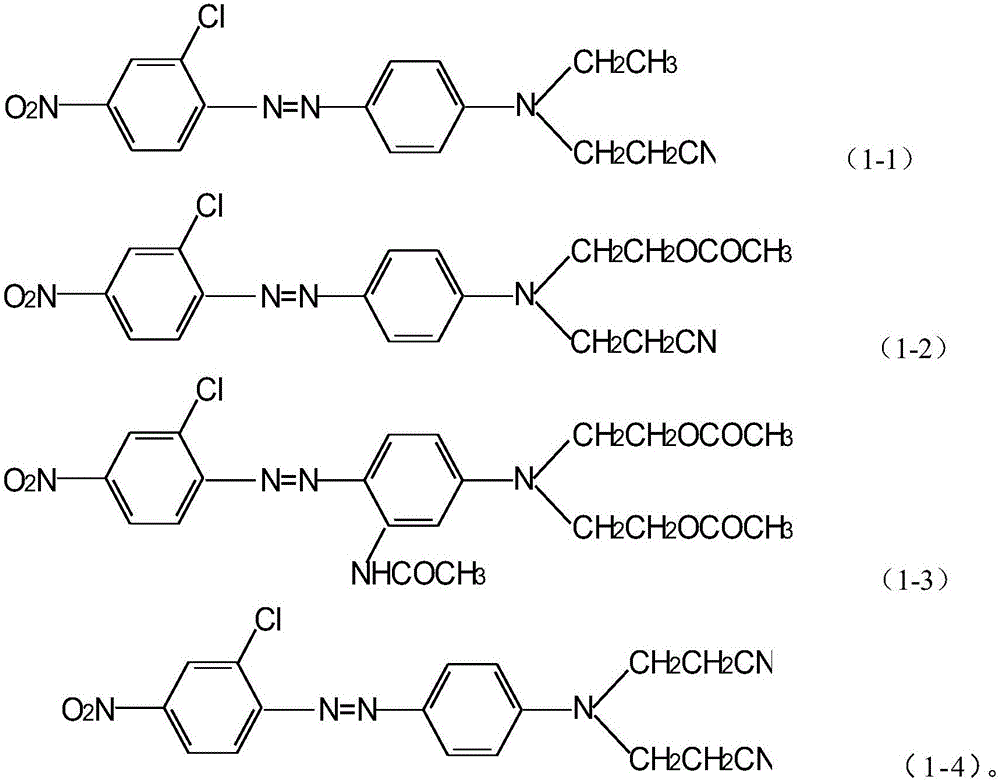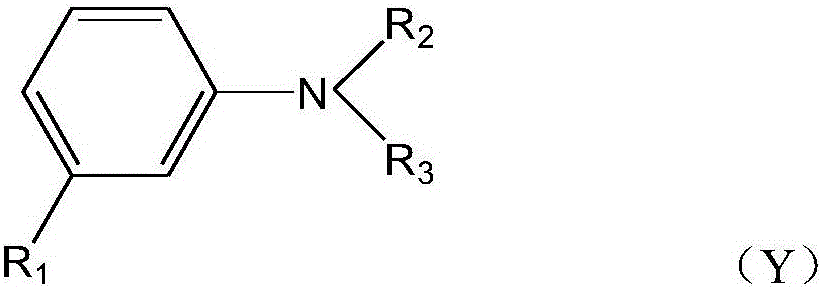Disperse dye composition and preparation method and use thereof
A technology for disperse dyes and compositions, applied in dyeing methods, organic dyes, textiles and papermaking, etc., can solve the problems of different content of harmful substances, unsatisfactory environmental protection results, loss of printing and dyeing plants, etc., achieving convenient use and saving environmental protection treatment costs. Effect
- Summary
- Abstract
- Description
- Claims
- Application Information
AI Technical Summary
Problems solved by technology
Method used
Image
Examples
preparation example 1
[0044] a) Add sulfuric acid to the diazo kettle, start stirring, then slowly add nitrosyl sulfuric acid, control the temperature not to exceed 40°C, after the addition, cool down to 10°C, slowly and evenly add the intermediate o-chloro-p-nitro for about 3 hours Aniline, after adding, was incubated for 2.5 hours to obtain the diazo component, which was then used;
[0045] b) Add water and ice to the diazo dilution kettle, cool down to below 5°C, press into the diazo solution for dilution, control the dilution temperature to be no more than 5°C, after pressing, add activated carbon, stir for 30 minutes, filter, Put the diazo filtrate into the coupling kettle;
[0046] c) After the diazo has been injected, start the coupling kettle to stir, add sulfamic acid, add Pingping, drop the coupling component N-ethyl-N-cyanoethylaniline, drop the time for 4 hours, control the reaction temperature 5-10 °C, after dropping, keep it warm for 4 hours, slowly raise the temperature to 80 °C for...
preparation example 2
[0048] a) Add water and hydrochloric acid to the diazo kettle, turn on the diazo kettle to stir, add 2-chloro-4-nitroaniline, stir and beat for 2 hours, add ice to cool down to 0°C, add 30% nitrous acid for about 1 hour Sodium solution, the temperature is controlled not to exceed 5°C, after the addition is completed, the heat preservation reaction is carried out for 2 hours, and the diazo component is obtained, which is ready for use;
[0049] b) Add water and ice to the diazo dilution kettle, cool down to below 5°C, press into the diazo solution for dilution, control the dilution temperature to be no more than 5°C, after pressing, add activated carbon, stir for 30 minutes, filter, Put the filtrate into the coupling kettle;
[0050] c) After the filtrate is poured in, start the coupling tank to stir, add sulfamic acid, add flatly, add the coupling component N-ethyl-N-cyanoethylaniline dropwise, add dropwise for 4 hours, and control the reaction temperature at 5-10°C After dro...
preparation example 3-5
[0052] Preparations 3-5 adopted the method of Preparation 1, except that the coupling component N-ethyl-N-cyanoethylaniline in Preparation 1 was replaced by the coupling components shown in Table 1, respectively.
[0053] Table 1
[0054]
[0055]
[0056] The components A contained in the product (I-2) to product (I-4) obtained in sequence from Preparation Example 3-5 are compounds of formula (1-2) to formula (1-4), respectively.
PUM
 Login to View More
Login to View More Abstract
Description
Claims
Application Information
 Login to View More
Login to View More - R&D
- Intellectual Property
- Life Sciences
- Materials
- Tech Scout
- Unparalleled Data Quality
- Higher Quality Content
- 60% Fewer Hallucinations
Browse by: Latest US Patents, China's latest patents, Technical Efficacy Thesaurus, Application Domain, Technology Topic, Popular Technical Reports.
© 2025 PatSnap. All rights reserved.Legal|Privacy policy|Modern Slavery Act Transparency Statement|Sitemap|About US| Contact US: help@patsnap.com



